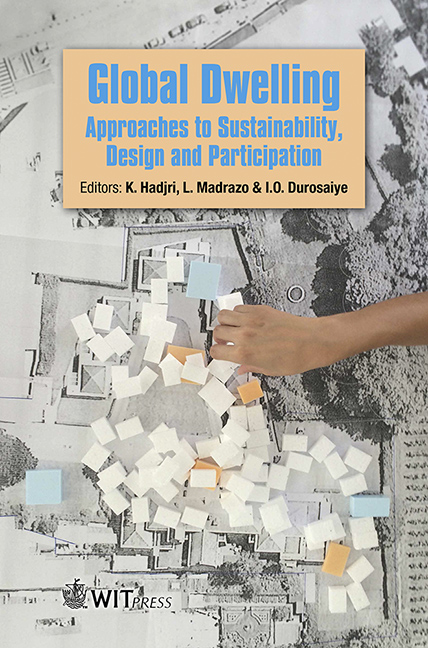Comparative Study Of Traditional And Contemporary Islamic Dwelling Design: The Case Of Benghazi, Libya
Price
Free (open access)
Transaction
Volume
193
Pages
11
Page Range
39 - 49
Published
2020
Size
445 kb
Paper DOI
10.2495/GD170041
Copyright
WIT Press
Author(s)
N. Ali, A. Taki, B. Painter
Abstract
In Benghazi, Libya, the rising population and increased housing demand has led to high energy consumption in order to provide comfortable conditions. These contemporary dwellings make use of outdoor open spaces and a high glazing ratio of the building envelope, leading to significant underperformance with respect to heat gains and cooling loads when compared with more traditional dwellings. The aim of this paper is to investigate the main features of traditional Islamic houses, which can enhance environmental comfort and reveal insights when compared with contemporary houses. The methodology will consist of reviewing previous research regarding traditional Islamic houses in order to find the main climatic features, as well as a case study that will involve evaluating contemporary houses in Benghazi, Libya. Furthermore, 60 questionnaires were distributed in order to determine the main problems relating to both residents and housing design in terms of enhancing housing thermal comfort and decreasing energy consumption. The comparative study shows that the majority of traditional Islamic houses have sustainable features that can be integrated into contemporary houses in order to provide thermal comfort whilst minimising energy consumption. These features include internal open spaces (such as courtyards), and small, high openings in the external façade, together with shading devices and specific building orientation. The research likewise shows that 89 percent of contemporary Islamic houses in Benghazi not only lack these sustainable features as internal open spaces, but also shows that all of the local residents depend on air conditioning when facing the hot days. Additionally, the survey illustrates that just 15 percent of architects are responsible for designing these houses, which have windows with a high glazing ratio, located in the façades most exposed to the sun. The implication of this with regards to the sustainable designing of contemporary Islamic houses is discussed in order to help produce guidelines for designers that would respond to both the climate and to local people’s needs.
Keywords
hot climate, thermal comfort, privacy, traditional Islamic houses, contemporary houses, energy consumption, Libya





